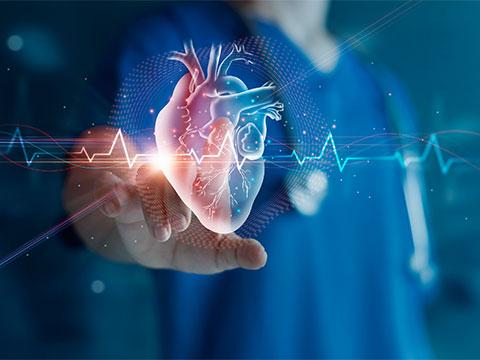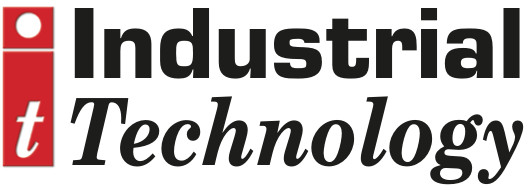
Posted to News on 30th Nov 2023, 09:44
Motion technology integral to cardiovascular disease treatment devices

From the treatment of narrowing arteries through to circulatory support, miniature motors act as the heart of medical devices used to treat cardiovascular disease. When selecting motor solutions for such applications, compact size and precision control are crucial factors, as the experts and Portescap explain.
Optimised motion technology choices for atherectomy, thrombectomy and circulatory support procedures will greatly impact the effectiveness of treatment devices and have a significant outcome on patients.
Earlier this year, the World Heart Federation, the global organisation that focuses on cardiovascular disease prevention, reported that deaths caused by this condition had increased globally from 12.1 million in 1990 to 20.5 million in 2021, making cardiovascular disease the highest cause of deaths worldwide. While improvements in diet, regular exercising and advances in medication can help prevent and manage the disease, medical procedures are often required to treat more advanced symptoms.
Procedures as such can have various purposes like removing defective or harmful biological matter in arteries, supporting the administration of medication to better the condition, and assisting with the overall blood circulation. The commonality between these procedures is their requirement for medical devices that rely on the controlled rotation of an electric motor. The size requirements, as well as the relatively low power needs, mean that miniature DC motor technology is commonly used.
Atherectomy
Atherosclerosis is the accumulation of fatty substances, cholesterol and calcium within the arteries. Significant narrowing can cause conditions such as peripheral and coronary artery disease, and the deposits, known as plaque, need to be removed from the artery walls to restore blood flow. This atherectomy process is achieved by cutting, shaving and sanding the inhibiting material with a motor-driven medical device.
Considering the small space envelope of operation and the potential for damage to a healthy artery, the main motion requirement is precise control of the end effector. This must be combined with high speed, sufficient to effectively cut or grind the plaque, whilst minimising procedure time to improve the patient outcome.
Brushless DC motors (BLDC) are the preferred technology. With a design that uses electronic commutation via an external controller, this precise modulation enables rapid switching of the motor's windings that achieves high speed. Improving synchronisation between the rotor's position and the current applied to the coils allows smoother motor operation, necessary to reach the required speed. Portescap’s Ultra EC BLDC motors, for example, can deliver speeds up to 73,000 rpm. In combination with speed, providing high torque to weight and footprint, a motor as small as just 16 mm diameter can be used.
Another key advantage of a BLDC motor’s external commutation is enhanced control precision. This allows close modulation of speed and torque, ensuring effective plaque removal while minimising the risk of damage to the arterial wall. Improved control also enables more targeted treatment, resulting in reduced procedural complications and better outcomes for patients. Precise control is enhanced with low vibration, a feature of a BLDC motor like the Ultra EC, while low noise enhances the experience, both for the patient as well as surgical staff.
Thrombectomy
While a stroke is categorised as a neurological condition, an acute ischemic stroke involves the blockage of an artery, preventing blood flow to part of the brain. This blockage could be caused by a plaque build-up, or a blood clot. Procedures can be used to dissolve the blood clot, and this treatment may also be required for cases of DVT (deep vein thrombosis) and pulmonary embolism. A thrombolysis procedure involves drug administration to remove the clot, while alternatively, thrombectomy uses specialised catheters and devices to capture, dismantle, and remove the clot.
Within these devices, coreless brushed DC motors are preferable, primarily for their characteristics of light weight combined with high power to weight ratio. The design of the motor removes the traditional iron core, replacing it with a specially designed winding. This makes coreless brushed DC motors, like the Portescap Athlonix, compact and lightweight, ensuring ease of manoeuvrability within the catheter, enabling rotation of the end effector to break up the clot.
Coreless brushed DC motors also give smooth and precise speed regulation, particularly at lower speeds, while operating with minimal vibration. These factors are essential to maintain control precision, and they also ensure smooth and reliable functioning of the thrombolysis treatment devices. As coreless brushed DC motors generate low noise levels and are low in vibration, the patient experience is also optimised.
Circulatory support
Even when under close medical monitoring, patients with weakened hearts, such as those awaiting a heart transplant or wider cardiovascular treatment, are at risk of a temporary pause in heart function. Though heart pumping can restart, this can impact the heart’s ability to resume normal flow thereafter. To help prevent this, ventricular assist devices, also known as cardiac assist devices, support the heart in pumping blood through weakened chambers.
These devices can be intracorporeal (inside the body) or extracorporeal (outside the body). In both cases, the pumps are driven by miniature motors, essential for the form factor, particularly for intracorporeal use, and the main motion requirements are high precision with maximum responsiveness to follow the natural rhythm of the heart. As a result, BLDC motors are the typical choice.
As BLDC motors use electronic commutation, this optimises precise control over speed and torque, which in turn means accuracy in pump speed and flow. Consequently, the pump can closely mimic the natural functioning of the heart and is able to dynamically adapt to a patient’s changing requirements. Portescap’s Ultra EC BLDC motor enhances this level of control with smoother torque flow thanks to the lower inductance and cogging torque generated by the slotless design.
To ensure reliable operation, as well as patient safety, minimising motor temperature rise during operation is also crucial. BLDC motors ensure high efficiency with minimal losses, thanks to the reduction in friction that they provide, keeping temperature at a controlled level. This efficiency, combined with reduced mechanical wear, also enhances reliability.
Customisation
To specify the optimal miniature motion solution, it is crucial to fully understand the requirements of the procedure and host device. Getting this right from the start will ensure a more efficient development and integration programme, achieving a faster time to market.
This is particularly important as customisation of the motion solution is often required. Customisation can impact form factor and weight, overall design integration, as well as performance. As a result, working with motor designers like Portescap from outset of the project will ensure the best outcome for the patient experience, the surgical staff, as well as the OEM device designer.






